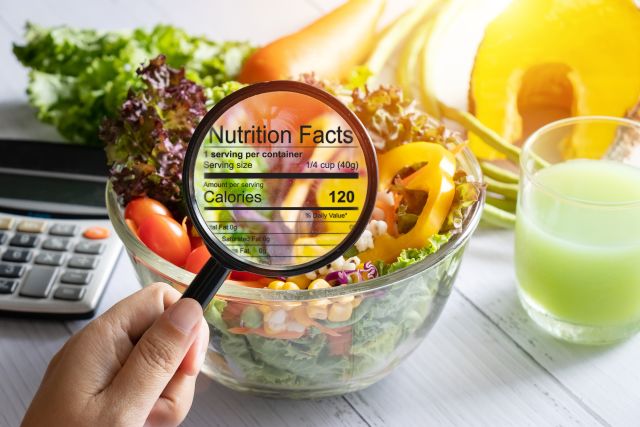In May 2016, the U.S. Food and Drug Administration (FDA) revealed a major overhaul of the nutrition label included on packaged foods. It was the largest update in more than two decades.
The agency required that the new labels be implemented by January 2020 for many manufacturers. Those manufacturers earning less than $10 million in annual sales were allowed an additional year to comply with the new rules.
The updates required labels to include bold, clear calorie counts, more accurate serving sizes, added sugars, and more.
Here’s what to look out for next time you’re in the supermarket:
More realistic serving sizes
Serving sizes have changed significantly in the decades since the original nutrition label was created. With the new label, serving sizes more closely reflect what people actually eat—not what they should eat.
For example, while the previous serving size on the label of a pint of ice cream was half a cup, the serving size on the new label is two-thirds of a cup. The calorie count reflects that increase, too.
Bold, clear calorie counts
Calorie counts are now printed in large, bold type. The emphasis on more readable calorie information is intended to help address public health concerns around conditions like heart disease, diabetes, and obesity and to help consumers make informed, healthy choices.
Focus on fat quality, not quantity
Information about how many calories come from fat has been removed from nutrition labels. Instead, total fat, saturated fat, and trans fat continues to appear on labels. Research has shown that the type of fat is more important to nutrition than the amount of fat.
Eating more unsaturated fats instead of saturated and trans fats can lower cholesterol levels and promote heart and brain health. Some examples of healthier fats are those from plants, such as avocados, olives, nuts, and flax seeds. Fish, such as salmon, are also a good source of healthy fats.
Saturated and trans fats, on the other hand, can increase your risk for heart disease. Aim to eat saturated fats only sparingly, while avoiding trans fats entirely.
Added sugars called out
Even so-called healthier foods like granola, yogurt, and fat-free salad dressings may contain large amounts of added sugars. These are sugars that are not present in the food before it was produced.
The FDA’s new label requires food manufacturers to list these added sugars in plain view. Government dietary guidelines suggest that less than 10 percent of peoples’ daily calories come from added sugar.
New required vitamins
You’ll also notice new nutrients that must be listed on labels. In particular, vitamin D and potassium now appear on labels because Americans are often deficient in these nutrients. Deficiencies in vitamin D and potassium have been linked to an increased risk of chronic disease.
Vitamins A and C, meanwhile, are no longer required on the label. Americans generally get enough of these vitamins.
Manufacturers have to declare the amount and percent Daily Value for vitamin D, calcium, iron, and potassium. Inclusion of amounts of other vitamins is voluntary.







